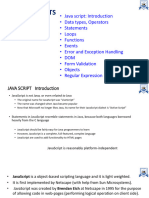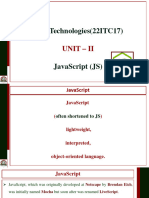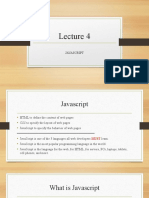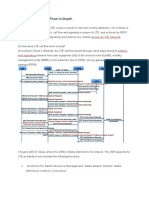0% found this document useful (0 votes)
23K views35 pagesJavascript: Prof.N.Nalini Ap (SR) Scope Vit
1. JavaScript is a scripting language that is used to make web pages interactive. It is run by web browsers and can change elements on web pages, validate forms, and interact with servers.
2. JavaScript code can run on the client-side in the browser or on the server-side. It allows dynamic changes to HTML content without reloading pages.
3. JavaScript has many data types including numbers, strings, Booleans, objects, and arrays. Variables do not need to be declared with types.
Uploaded by
Hansraj RouniyarCopyright
© © All Rights Reserved
We take content rights seriously. If you suspect this is your content, claim it here.
Available Formats
Download as PDF, TXT or read online on Scribd
0% found this document useful (0 votes)
23K views35 pagesJavascript: Prof.N.Nalini Ap (SR) Scope Vit
1. JavaScript is a scripting language that is used to make web pages interactive. It is run by web browsers and can change elements on web pages, validate forms, and interact with servers.
2. JavaScript code can run on the client-side in the browser or on the server-side. It allows dynamic changes to HTML content without reloading pages.
3. JavaScript has many data types including numbers, strings, Booleans, objects, and arrays. Variables do not need to be declared with types.
Uploaded by
Hansraj RouniyarCopyright
© © All Rights Reserved
We take content rights seriously. If you suspect this is your content, claim it here.
Available Formats
Download as PDF, TXT or read online on Scribd
/ 35






























































































